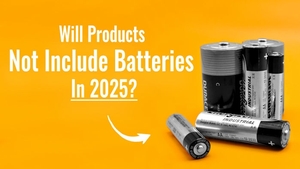White, natural lighting has many benefits and has become both cheap and accessible. LED bulbs give you control over the color temperature of your home as well as energy efficient lighting.
The Importance of Natural White Light & Why You Need It in Your Home

Light-emitting diode (LED) technology has seen massive changes, allowing consumers to have unprecedented light quality and efficiency. “Natural indoor lighting” may seem like a contradictory term, but it has become an affordable reality in recent years — and it’s hard to ignore the monetary and aesthetic benefits of LED bulbs.
For aesthetic and health reasons, white light is a great choice for indoor lighting. However, many consumers don’t know about the benefits of using white LED lighting, as well as the long road technological innovators faced when it came to bringing natural-feeling white light indoors.
Let’s dig deeper into the importance of white light, take a brief look at the history of its development, and explore how consumers can bring it into their homes today for an affordable price.
Why Does White LED Lighting Matter?
If you haven’t kept abreast of recent developments in lighting, learning about the many benefits of white LED bulbs can certainly be illuminating. To get an understanding of how LED lights compare to other types of indoor bulbs, let’s compare the three most common types in use today: incandescent, compact fluorescent, and LED.
Types of Indoor Lighting

There are a number of criteria to keep in mind when comparing different types of indoor lighting, including your desired brightness and energy efficiency.
- Incandescent: Incandescents are as traditional as you can get. Also known as “Edison bulbs,” these old fashioned lights emit light through a tungsten filament that is heated to 4,000 degrees. They are inexpensive, emit soft light, and are not energy efficient.
- Brightness Efficiency: 800 lumens for a 60-watt bulb
- Cost: Approximately $0.50 each
- Duration: They last 1,200 hours
- Energy Cost: Around $1.10 per month for average usage of a 60-watt bulb
- Compact Fluorescent (CFL): A step up from incandescent bulbs in many ways, CFL bulbs use heated gas to produce infrared light, which is made visible through a coating on the bulb. They are a bit more expensive than incandescent bulbs, but provide substantially better energy efficiency.
- Brightness Efficiency: 800 lumens for a 13- to 15-watt bulb
- Cost: Approximately $4.00 each
- Duration: 8,500 hours
- Energy Cost: Around $0.26 per month for average usage of a 13- to 15-watt bulb
- LED: This represents a notable upgrade from both incandescent and CFL bulbs. LED lights are substantially more energy efficient than either and can provide much brighter, more natural-looking light. While these benefits have historically been offset by a high cost-per-white-light-bulb, that cost has become a fraction of what it once was in recent years due to improved manufacturing methods and lower production costs.
- Brightness Efficiency: 800 lumens for a 8- to 10-watt bulb
- Cost: Approximately $2-4.00 each
- Duration: 15,000-50,000 hours
- Energy Cost: Around $0.19 per month for average usage of a 8- to 12.5-watt bulb

Given the statistics above, it’s clear that LEDs give you the biggest bang for your buck. They are also more aesthetically diverse, giving you near-endless options when it comes to finding the brightness and color temperature that suits your home’s needs. However, this is only the beginning of the benefits you’ll receive when switching to LED lighting.
Benefits of LED Lighting
There are many other benefits of LED bulbs. Consider how lighting affects your psyche. We’re all familiar with the eye-straining, headache-inducing effects poor lighting can give us. Sometimes called the “fluorescent headache,” it can harm your well-being and even affect your productivity. On the other hand, consider how natural light from the outdoors affects you: It makes you feel alert, reduces stress, and keeps you happier.
Short of opening your windows, no other indoor lighting solution simulates natural lighting as effectively as white LEDs. Created by blue LEDs, indoor white light bulbs have only been available to consumers since the early 2000s, and it is becoming more affordable with each passing year.
White light emulates natural lighting from the outdoors and has many positive benefits, from enhancing your focus to simply being more aesthetically pleasing. In some instances, it can even benefit your work. If you enjoy taking photography or drawing, for example, natural LED lighting will give you ideal working conditions.
The history behind the creation of indoor natural light is long and complex. Understanding why it is such a big deal in the grand scheme of things might even tempt you into making the change.
The Road to Indoor White Light
While the work of early pioneers like Thomas Edison is widely known, more recent developments — particularly in LEDs — have been less widely discussed. However, major advancements have impacted the availability and usefulness of LED lighting throughout the 20th century.
A Short Timeline

Here is a very brief timeline, using historical information from the Edison Tech Center:
- 1927: Oleg Losev studies silicon carbide contact junctions in radio sets, noting that they produce lights when a current passes through them. He publishes a detailed report on his findings this year.
- 1961: James Biard and Gary Pittman develop the first modern LED at Texas Instruments. They “discovered” the technology by accident during unrelated testing.
- 1962: Nick Holonyack Jr. at General Electric develops the first red LED — the first one of visible light.
- 1972: Herbert Maruska and Jacques Pankove develop the violet LED — a precursor to bright blue LED. The same year, M. George Craford at Monsanto creates the first yellow LED and a brighter red LED.
- 1979: Shuji Nakamura develops the first bright blue LED. However, the high cost of production makes it non viable for commercial use.
- 1993: One of the biggest innovation in lighting is, without a doubt, the development of blue LEDs in 1993 by professors Hiroshi Amano, Isamu Akasaki, and Shuji Nakamura. This is the technology used in modern LED lighting and produces what is now called “white” or “natural” light indoors.
It’s hard to overstate the impact of this final development. In fact, the three professors responsible for the development of blue LEDs received the Nobel Prize for physics in 2014, an award only afforded to inventions that provide “the greatest benefit to mankind.” This technology is not just used to light homes around the world more efficiently and brightly than any of its predecessors — in fact, it even powers the screens of smartphones.
So, how can you bring this revolutionary development into your home today and reap the benefits?
How to Bring Natural Light Into Your Home Today
As noted above, white LED lighting has become a reality for consumers since the early 2000s, but it’s only in recent years that is has become so affordable. Early bulbs easily ran between $25-35 per bulb, but they can easily be bought for less than $5 today. Consumer Reports agrees: It’s time to make the switch. How can you get started?
Affordable Natural Light: Getting Started
Before making the change, you have one decision to make early on: Are you going to have new sockets installed, or will you use LED retrofit bulbs? While the latter don’t require as much labor to install, fixtures for incandescent light often aren’t designed with the directional nature of LED lighting in mind; indoor LED fixtures, however, typically diffuse such light more efficiently. Either of these are smart ways to make the switch, but you’ll need to decide which suits your needs and budget.
Next, consider the bulb shape you want to use. Your light fixture may determine which you opt for, but each has its own benefits. Pear, globe, flood, and tubular bulbs each diffuse light in different ways. Experimenting with different shapes is a great way of finding which suit each of your rooms best. These are only a few examples.
Looking to the Future

If you’re interested in more recent advancements in lighting, such as adjustable light colors and smart home integration, LEDs are where it’s at. Imagine being able to schedule lights to automatically turn on and off at dedicated times, or adjusting the colors of each room to suit your mood. You can even set your overhead LED lights to flash red when your home or fire alarm sets off! New smart home applications for lighting are being released each year, and these exciting features have serious promise.
There’s no question that LEDs have seen a massive increase in popularity due to their energy-efficient capabilities and affordability. Are you going to make the switch?





